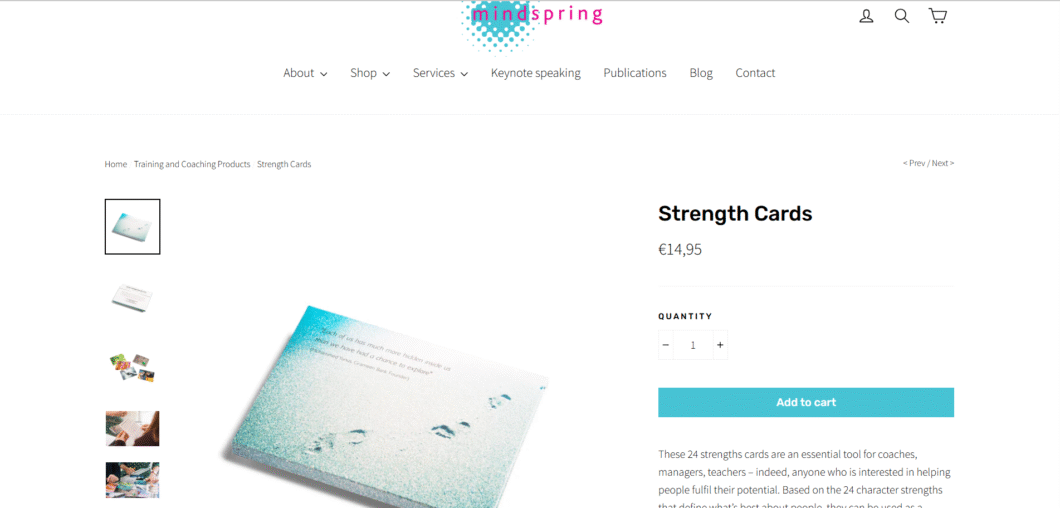1) Set the frame
- Explain: “These cards represent 24 universal human strengths. We’ll use them to find your key strengths, explore how they show up in your life, and practise telling interview stories that highlight them.”
2) Identify signature strengths
- Spread out all the cards. Ask the client to pick 5 strengths that they are most confident they use on a regular basis (not the five the wish they had, feel they should have)
- Explain that it might be quite difficult to pick out only 5. They might want to pick out 6, 7 or more, but should limit themselves to the 5 that they are most confident they use on a regular basis.
3) Strengths through others’ eyes
- Ask the client to imagine what colleagues, friends, or family would choose for them.
- This provides external evidence — exactly the kind of feedback interviewers find convincing.
4) Explore strengths in action
For each chosen card, ask Solution-Focused questions to uncover real, observable examples:
- “When have you used this strength recently?”
- “What exactly did you do in that moment?”
- “What was different because you used it?”
- “Who noticed and what did they see?”
- “If you used this strength even more, what would others notice about you?”
This turns abstract strengths into concrete behaviours.
5) Translate into STAR stories
For interview preparation, each strength should be linked to a structured example:
- Situation (S): Brief context — when/where.
- Task (T): What needed to be achieved.
- Action (A): What the client actually did, step by step, showing the strength in use.
- Result (R): The outcome, difference made, or feedback received.
Tip: Ask “What difference did that make for you/your colleague/the customer/your Manager/your company?” + “What clues tell you that?” “How did they respond?” to strengthen the Result section.
6) Roleplay interview questions
- The facilitator or peer asks competency-based questions (e.g., teamwork, leadership, problem solving).
- The client answers in 60–90 seconds using a STAR story tied to one of their strengths.
- Give feedback in Solution-Focused style:
- “What worked well in that answer?”
- “What small change would make it even better?”
- “On a scale of 0–10, how confident did you feel telling that story? What would help move you one step higher?”
7) Consolidate and carry forward
- Encourage the client to note down their signature strengths and example stories.
- Suggest they bring strengths language into CVs, LinkedIn profiles, and daily work conversations.
- Remind them: strengths are like muscles — they grow stronger through regular, conscious use.
Outcome: The client leaves with clear awareness of their strengths, concrete examples of how they use them, and ready-made interview answers built in STAR format, all developed in a supportive, Solution-Focused way.
Home Task: Ask them to notice when they are using their signature strengths over the coming days and weeks, and what effect that has on them/those closest to them/their colleagues/their customers and so on. This is a useful ‘noticing exercise that asks them to change nothing.
